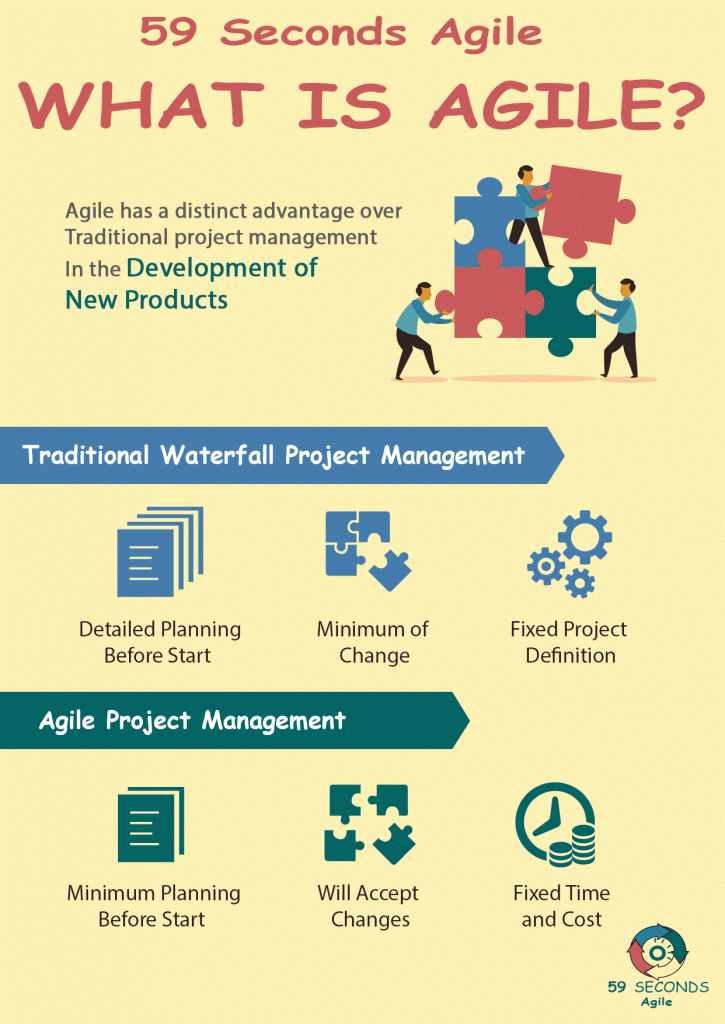Initiating an Agile Project
A 59 Seconds Agile Training Video
Continue to Part Below
Initiating an Agile Project For Developers
A 59 Seconds Agile Article
This article provides a discussion on ‘Initiating an Agile Project’ and looks to discuss what Agile is and the processes involved when starting an Agile project.
Initiating an Agile Project
Let’s think back to the project that was proposed in the introduction. We’ll follow the project through its development, using two different methods of project management, to see how decreasing the amount of documentation affects the outcome of the project.
In the first situation, where your team is using traditional methods of project development, your first step after being assigned the project is to sit down with your team and spend months creating a huge timeline and detailing how and when every aspect of the product will be made. The finished document is substantial, and your team originally feels a sense of pride in locking down the project so thoroughly.
However, you run into trouble when you get closer to finishing the product as you had planned it. While discussing the planned dates for testing the application with the customer, a large misunderstanding of the project requirements is uncovered.
The product that you and your team spent six months planning and almost a year developing isn’t what the customer wants. When your team created the original documentation, you made a couple of assumptions about the project requirements that led you off on the wrong track.
Now, you’ve wasted a lot of time creating the wrong product, and it’s going to be almost impossible to create the product that the customer actually wants within the required timeframe and budget. Your team is disheartened, and you don’t know how to proceed. A lot of your team’s work was wasted, because you spent so long documenting what you now might consider the wrong product.
What if you hadn’t spent so long on the documentation? What if you had worked closer with the customer and performed regular feature demonstrations? The actual development would have started earlier, and you would have received feedback as you progressed. This would give more flexibility to adapt the product over time. Let’s look at that same example again and see where your team could do things differently to achieve a more positive outcome.
Continue Reading —> Next
Initiating an Agile Project:
A 59 Seconds Agile Video Animation
Continue Reading —> Next
User Stories Applied
A 59 Seconds Agile Book Review
User Stories Applied by Mike Cohn is one of our favourite books on Agile User Stories. The book starts with an overview into user stories, and details what a user story is and the different aspects of them. He then discusses how to go about writing a user story, and provides details of the INVEST criteria that can be used to determine if the story is meeting all of its objectives. Next Mike gives an in depth discussion of who user stories are written for and where to begin when gathering the details for them. The book then discusses acceptance testing user stories, including how to go about specifying these criteria and the responsibilities of the development team and customers during this process.
Continue Reading —> Next
What is Agile?
A 59 Seconds Agile Infographic

Continue Reading —> Next
Agile Scrum Master Training Course
Our Favourite Agile Books
We found these books great for finding out more information on Agile Scrum:
Continue Reading —> Next


